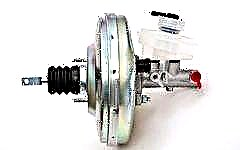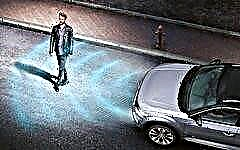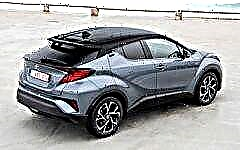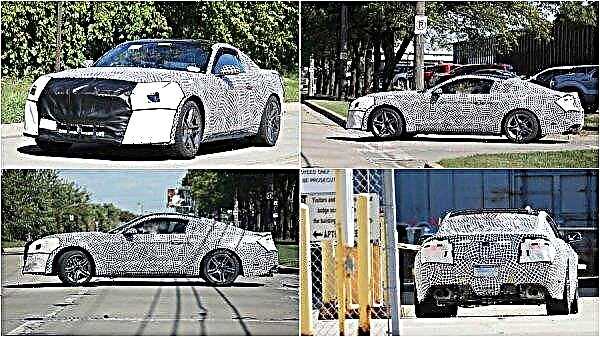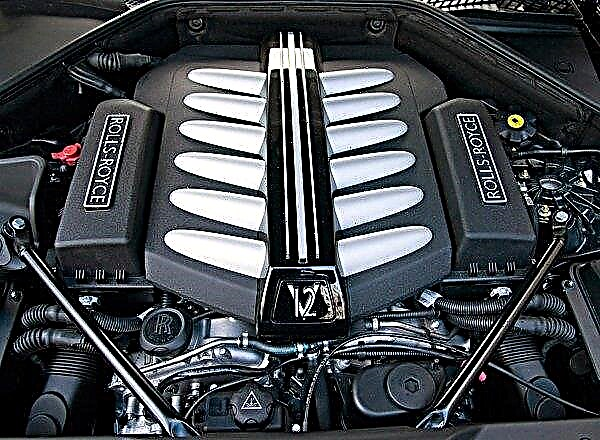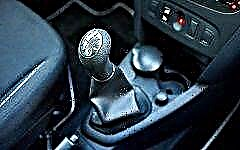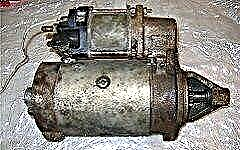
In the running state, the movement of the car engine is supported by the flywheel, which provokes its rotation. The crankshaft has multiple counterweights. Both the flywheel and the components of this unit generate an inertial effect that prevents the motor from stalling at a dead center.
In terms of design and specifics of work, starters for VAZ look almost the same as systems from other manufacturers. The only differences may lie in the power of the device. For example, a low-power starter is suitable for a gasoline engine, and a more efficient option for a diesel engine.
The design and features of the VAZ starter

Starters for VAZ look almost the same as identical devices for other representatives of the domestic auto industry, as well as many foreign cars. It means a kind of electric motor that generates direct current and interacts with the car battery.
The key elements of the assembly are the following components:
- a motor (the system includes an armature, a stator and a unit with brushes), which is connected to the bendix through a common axis;
- a retractor relay including a winding of the same name and a compact core;
- fork (required to align the starter shaft and retractor);
- overrunning clutch, return spring and a number of other elements.
Features of the starter are as follows:
- during the start of the car, the electric discharge from the battery is directed towards two relays, which leads to the appearance of a magnetic field on the windings;
- the appeared field causes the retraction armature to move along the horizontal axis and pushes the bendix forward;
- after the part occupies the extreme point and comes into contact with the toothed surface of the flywheel, the contact closes on the motor and the solenoid relay turns off. Only the holding relay remains in the connected state;
- the engine continues to work, rotating the bendix, and the latter sets the flywheel in motion until the engine starts;
- when the power plant starts to work, and the intensity of rotation exceeds the speed of the starter motor, the freewheel engages, and the retractor relay returns to its previous position. Also at this moment there is a disengagement of the bendix with the flywheel.
Varieties of starters

There is 2 types of starters, which are used on VAZ cars and differ in efficiency and internal structure:
- Without gearbox. It is a classic version of the starter angle. In such a unit, the motor armature and the bendix are on the same shaft.
- Gearbox. Unlike the previous model, a gearbox is located on the anchor shaft, which starts the rotation of the bendix.
The traditional type of starter has several downsides that have led engineers to rework its circuitry. The key disadvantage is the low permissible performance. Due to the gradual increase in the volume of engines, carmakers were forced to increase the power of the starters - this affected their price and dimensions.
Units with a gear unit generate the maximum amount of power and at the same time are ergonomic and lightweight. For the system to work correctly, you do not need to spend a lot of energy. The uninterrupted functionality of the unit does not require a lot of voltage, so even a worn out battery pack will not provoke a failure in the operation of the gear unit.
Connection diagram

The wiring diagram of the starter unit implies the combination of the starter, battery and ignition. In older models of cars with injection engines that have a control controller, there is an auxiliary component - a relay. But on old car models from a VAZ with a carburetor, the part is missing.
The most primitive starter system diagram looks like this:
- from the terminal with a positive value on the battery, the power cable is connected to the bolt of the start relay cover;
- the second battery cable is connected to the 50th contact of the ignition switch. Then it interacts with the terminal "50" connected to the windings of the holding and traction relays;
- grounding is performed using a starter housing adjacent to the engine housing. There is no separate ground wire.
If an auxiliary relay is provided in the electrical circuit, it is connected after the ignition switch.
If the mileage of the car exceeds the 100 thousand km mark, and the car is operated every day, the installation of a new starter may become mandatory. In addition, the installation of the part will become a kind of insurance that the vehicle will serve for a long time. Site maintenance is an important activity, especially before the winter season.
There are several common problems with starters on VAZ cars:
- when starting the power unit in the "starter" position, the solenoid relay does not work, which is confirmed by the absence of a click;
- the starter refuses to rotate. Perhaps this was caused by a malfunction of the solenoid relay. In addition, the problem occurs when the battery is faulty, the battery is low or the battery terminals are in poor condition;
- a click is heard when the power unit starts, but the starter refuses to spin. The problem manifests itself in the event of a malfunction of the solenoid relay, wear of the brushes, collector or armature. First you need to check the correct operation of the battery and the battery terminals for oxidation, and then make sure the quality of the mass;
- the rotation of the starter becomes more difficult. The problem is associated with a break in the armature winding, short circuit or wear of the brushes and starter bushings;
- the starter assembly rotates but cannot turn the flywheel. Perhaps this was caused by the wear of the bendix;
- the starter motor works after starting the power unit.
How to dismantle and replace the starter

The specificity of dismantling and replacing the starter on VAZ cars has one caveat - since the unit is located at the bottom of the vehicle, it is problematic to access it from above. For more convenience, it is recommended to do the work on the pit in the workshop.
The general sequence of actions for removing a part is as follows:
- first of all, disconnect the battery terminals;
- if there is a rear mudguard, it must be removed;
- it is allowed to dismantle the battery to free up free space;
- then you need to unscrew the clamp of the wires going to the starter, and remove the two cables from the contacts of the traction relay.
The setting of a new node is carried out according to the reverse algorithm:
- the unit must be screwed into place with the bolts. First you need to screw in the longest bolt, and then the other two;
- the wires should be fixed to the body, and the harness clamp should be put in its original place;
- the battery must be installed in its original place with the supporting parts and make sure that the starter is working;
- at the end, you need to fix the mudguard.
Diagnostics and repair of a starter with your own hands

The starter has a complex structure, because includes many individual components. This reduces its reliability, but gives one indisputable advantage - individual parts can be simply replaced or restored. And it is not difficult to carry out repair work at home. In addition, ready-made repair kits and suitable spare parts for VAZ starters are available for sale.
To determine whether the node is really out of order, you need to remove it and diagnose it. However, basic information about the health of the unit can be obtained by by visual inspection thus:
- assess the condition of the battery terminals and, if necessary, clean them of oxides;
- check the battery charge level;
- inspect the cables leading to the starter and make sure they are not defective. If possible, check the cables with a multimeter;
- it is also necessary to inspect the starter terminals and assess the quality of the contact.
If an external inspection of the starter does not give any results, but the part still does not work, you will need to resort to more complex diagnostics with disassembly of the part... In this case, you need:
- remove and clean the unit from contamination;
- evaluate the condition of the retractor relay as follows: connect the terminals with the "plus" value on the battery to the contact, and the negative - to the starter unit housing. If the bendix makes a click, then it is serviceable;
- dismantle the rear of the housing and check the brush assembly. If there are traces of wear and tear of elements, you must remove them and put new ones;
- using a special tester, you need to evaluate the rotor winding. The optimum resistance value is 10 kΩ. If it is lower, it is possible that a short circuit has occurred, and if it is higher, a winding breakage;
- using a multimeter, you need to "ring" the contact plates and check the resistance between the case and the device. The optimal value is 10 kOhm;
- The last step is to test the overrunning clutch: if it is serviceable, the rotation will be carried out in one direction, if it is out of order, in two directions.
Often, such diagnostics are enough to determine the predisposing factors that caused the starter to fail. After that, all that remains is to dismantle the non-working component, restore it and put it in its original place.
Starter does not rotate and does not start

If you turned the key, but the node did not react to it in any way, you should analyze three possible factors:
- lack of contact in the electrical circuit;
- damage to the ignition switch;
- relay failure.
Often, car owners manage to determine the cause of the breakdown as follows: you need to try to connect the control element directly to the battery and close with a piece of current-carrying wire. If the unit starts working properly, then the relay is not out of order.
Sometimes drivers are confronted with unpleasant squeak and third-party sounds when trying to start the car... This can be explained by several phenomena:
- skewing of the part due to unscrewing the fasteners;
- failure of bearing bushings or journals on the motor shaft;
- the release of the oil substance from the motor shaft and the problematic output of the bendix;
- failure of the gearbox;
- gear wheel wear on the bendix;
- wear of the ring gear.
If the signals are dubious, do not try to start the car. minor breakdowns can be repaired early. If you run the problem, it will only get worse.
Other malfunctions

When the solenoid relay is activated, but there is no engine start such predisposing factors can be considered:
- lack of current from the battery pack. The component may be discharged, or there may be an open circuit in the wiring;
- the brush holder has closed on the "mass" with the value "plus";
- the brush assembly is worn out;
- a failure has occurred in the armature or stator windings;
- the manifold is burnt out.
Even if only one brush is worn out, all four parts will have to be replaced. It is impossible to restore the retractor part on the VAZ unit in the garage using improvised means, therefore many car owners change it. As an exception, cases are considered when any contact is oxidized - it can be cleaned and the assembly can be reassembled. In case of damage to the windings, replacement is carried out as follows:
- it is necessary to unscrew the screws holding the solenoid relay on the starter body and remove this element;
- unscrew the fasteners holding the cover and body;
- unscrew the nuts holding the contacts on the relay housing and slightly move them to the side, being careful not to damage the wiring;
- remove the old core and fix a new one in its place.
If there are chips and damage on the housing with the starter relay, it will have to be replaced entirely.
Conclusion
Even with a complex design, the starter is a fairly reliable and durable unit that can operate smoothly for a long time without breakdowns. Its service life is determined not by the mileage of the car, but by the number of engine start cycles. With proper care and timely maintenance, the unit will efficiently cope with its tasks.

|| list |
- The design and features of the VAZ starter
- Varieties of starters
- Connection diagram
- How to dismantle and replace the starter
- Diagnostics and repair of a starter with your own hands
- Starter does not rotate and does not start
- Other malfunctions

